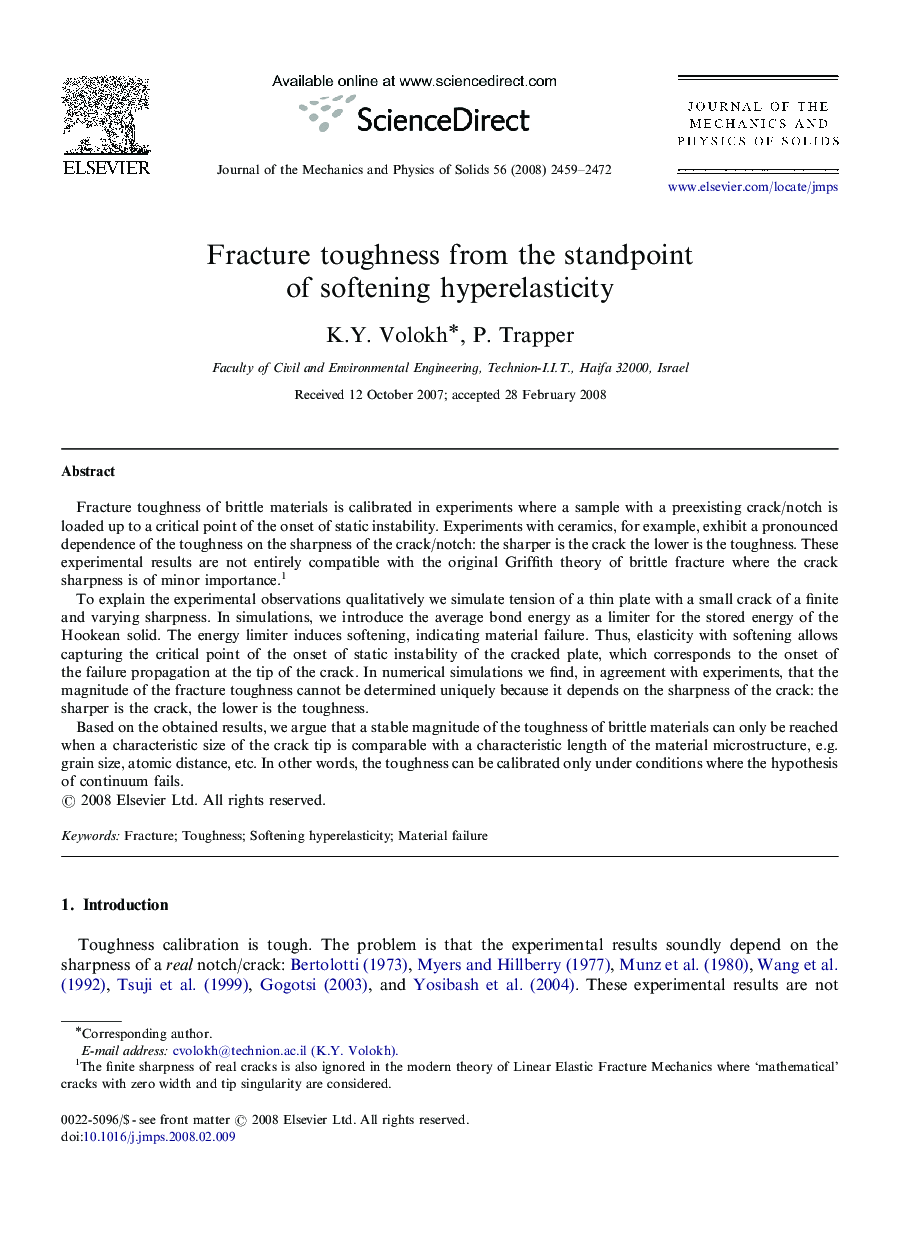| Article ID | Journal | Published Year | Pages | File Type |
|---|---|---|---|---|
| 796948 | Journal of the Mechanics and Physics of Solids | 2008 | 14 Pages |
Fracture toughness of brittle materials is calibrated in experiments where a sample with a preexisting crack/notch is loaded up to a critical point of the onset of static instability. Experiments with ceramics, for example, exhibit a pronounced dependence of the toughness on the sharpness of the crack/notch: the sharper is the crack the lower is the toughness. These experimental results are not entirely compatible with the original Griffith theory of brittle fracture where the crack sharpness is of minor importance.1To explain the experimental observations qualitatively we simulate tension of a thin plate with a small crack of a finite and varying sharpness. In simulations, we introduce the average bond energy as a limiter for the stored energy of the Hookean solid. The energy limiter induces softening, indicating material failure. Thus, elasticity with softening allows capturing the critical point of the onset of static instability of the cracked plate, which corresponds to the onset of the failure propagation at the tip of the crack. In numerical simulations we find, in agreement with experiments, that the magnitude of the fracture toughness cannot be determined uniquely because it depends on the sharpness of the crack: the sharper is the crack, the lower is the toughness.Based on the obtained results, we argue that a stable magnitude of the toughness of brittle materials can only be reached when a characteristic size of the crack tip is comparable with a characteristic length of the material microstructure, e.g. grain size, atomic distance, etc. In other words, the toughness can be calibrated only under conditions where the hypothesis of continuum fails.
